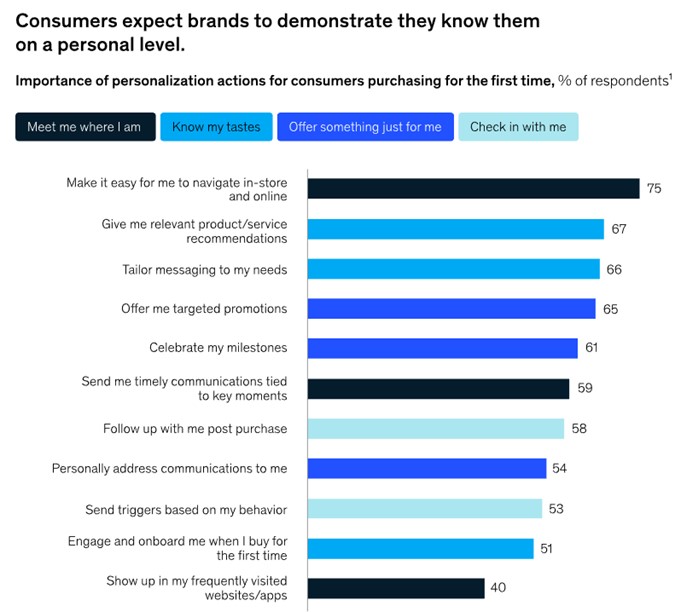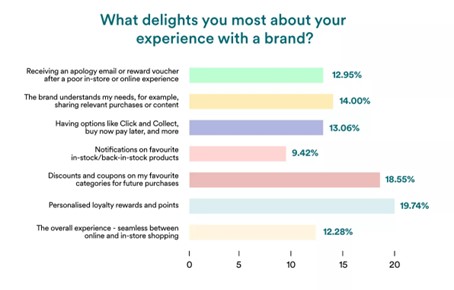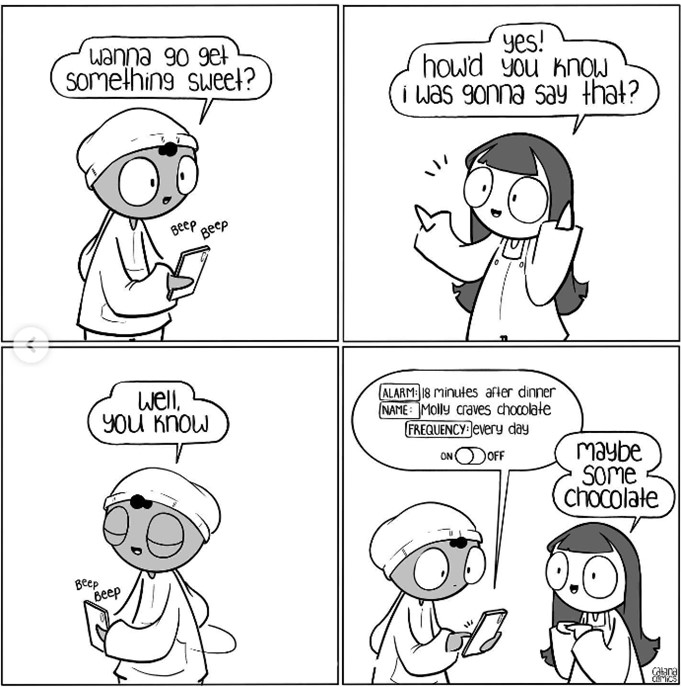How To Send Customized SMS Easily and Effectively

No matter how many messages you send to a phone number, if the information isn’t relevant to the person on the other side, it’s a waste of money – simple as that.
This is a risk all marketers take, especially with mass campaigns. What’s the alternative… not interacting with your customers out of fear of missing the mark?
Of course not.
The solution is to adjust your SMS marketing strategy to cater to each segment of your audience and send them only the stuff they want to receive.
Research shows that 72% of people expect businesses to recognize them as individuals and understand their interests. The research concludes that customers:
- Respond positively to businesses that care about the relationship, not just the transaction
- Associate “personalisation” with positive experiences that make them feel special
- Are more likely to repurchase based on personalised content
We’ll show you how to send customized SMS that will show your audience you know and value them on individual levels and don’t treat them as mere number$.
What Is a Customised SMS Message?
A customised SMS message (also known as custom SMS) refers to a marketing text message campaign that’s tailored to one individual or group of people based on their personal information.
It’s the SMS (short messaging service) marketing campaign equivalent to providing adequate sizing options for your clothing items so both XXL+ and XXS customers can find perfectly-fitting items.
You know, as opposed to being squeezed and smothered by “universal size” garments that don’t really fit anyone. Not to mention they make everyone feel ordinary and unspecial.
But how do you customize text messages in a way that’s time- and cost-effective?
You need to segment your audience by factors like their demographics, location, interaction and purchase history, and use that information to make your SMS campaign more relevant to them.
Messages can be customised on different levels:
| Message aspect | Customisation example |
|---|---|
| 1. Tone |
|
| 2. Content |
|
Before you ask – yes, your custom SMS needs to be personalised on both levels.
Isn’t just slapping a customer’s first name on a bulk text enough effort on your part to make the interaction feel personal?
Not quite.
Why Should You Bother Sending Custom Text Messages?
It’s true that 90% of people want to receive SMS from brands.
However, they don’t all want the same exact message. In particular, that’s among the easiest ways you could annoy your audience according to a recent consumer survey:
- 27% of respondents report being most frustrated by irrelevant content or product messages
- 14% of respondents say the frequency of messages isn’t important as long as the message content is relevant
People expect more from brands. Specifically:
Custom SMS is a great way to meet those demands and grab your customer’s attention. Next, let’s take a look at what those personalised text messages might actually contain.
More Relevant Offers and Timing
You wouldn’t send a welcome message to customers who are knee-deep in the loyalty program, right?
That would just annoy them out of your campaign because it’s irrelevant, even if it has their name on it. There’s nothing more annoying than watching someone else be confidently wrong about something – in this case, the stage that the customer is at.
Ideally, you’d want to stay by your customer’s side consistently and meet them at their level.
Personalised loyalty rewards and points are customers’ favourite part of the experience:
It only makes sense to use the information you have about your customers to engage them.
Improved Customer Experience
Any opportunity to make a customer’s journey more convenient and affordable is welcome.
Instead of generic bulk SMS messages, you can make customers feel special by sending:
- Special or flash deals based on their known interests
- Updates about their favourite product stock status or pricing
- Notifications to schedule a touch-up or card renewal appointment before it expires
- Suggestions based on interests and checkout history
Custom SMS allows you to make logistics a non-problem.
You’re there in their inbox at the perfect time, with the perfect offer, and customers can just sit back and enjoy the ride.
More Personalised Customer Service
The fastest way for customers to give you feedback is through 2-way messaging.
You can learn exactly what they need from you in real time, take notes, customise your approach, and use that to personalise your service even beyond the initial segmentation.
Delighting your customers with spot-on suggestions and deals separates you from other companies in their eyes and helps secure them in the long term.
Better Campaign Bottom Line
The natural results of doing your homework and making customers feel special aren’t surprising when you think about it:
- More engaged customers
- Higher open rates
- Higher click-through rates
- Better ROI
The bottom line of personalisation is a 10 to 15% revenue increase on average.
How To Send Customized SMS: The 8-Step Process
We’ve established that personalisation plays a substantial role in your campaign success, now let’s discuss what that looks like in practice.
Process Summary
At a quick glance:
- Import your existing contact list into your messaging platform
- Check your database for accuracy and ported numbers
- Collect any additional information you’re missing
- Segment your audience
- Compose custom text messages or SMS sequences for each segment
- Ensure you’re sending all your messages from a single sender ID
- Schedule and send your messages!
- Analyse the results and optimise with A/B testing
1. Import Your Existing Contact List Into Your Messaging Platform
Make sure you use the information you already collected instead of starting from scratch on a new platform.
Remember that customers want seamless interactions.
That means if they’ve already given you some data via a different channel or completed a form on your site, you better carry that information over to custom SMS.
Why?
Asking again makes them think you’re being lazy or not really listening to them.
Having the whole interaction context is the bare minimum you need to connect with your audience meaningfully.
2. Check Your Database for Accuracy and Ported Numbers
Check your database for accuracy and ported numbers.
This step prevents you from wasting money on the wrong numbers or failing to reach the customers who opted in and are expecting your custom SMS text messages.
Your provider can take care of this before you start your campaign.
3. Collect Any Additional Information You’re Missing
Consider customer surveys to help with segmentation in the next step.
You can incentivise customers with a small discount voucher or something else as a “thank you” for their time.
Younger generations are especially willing to give data for higher personalisation.
They want you to use that data if it helps you get your messages right because a customised approach saves them time and energy they’d otherwise spend looking for products, services, and events.
There are many ways to go about collecting this information. For instance, a poll on social media is a great start.
Additionally, asking for feedback from customers who are already receiving messages can help you refine the strategy.
There are two important things to note:
- Keep up-to-date information: Don’t just collect information once and not update it for years
- Ensure you’ve got consent to reach out: Compliance is no joke
Then…
4. Segment Your Audience
Don’t collect data that has nothing to do with your business goals or make your segments inflexible.
Customers move from segment to segment throughout their journey. Their pain points might change unrelated to their experience with you.
To keep up and segment your audience effectively, focus on these:
- Interaction history
- Sales funnel stage
- Demographics
- Location
- Any known preferences based on your surveys and experience
Your customer service and sales teams can help zero in on important details.
These details help you message at the right time, create relevant offers, avoid insensitive messages, and show customers you understand what they want for a long-term satisfying relationship.
5. Compose Custom Text Messages or SMS Sequences for Each Segment
Use custom fields to enable personalisation in your templates.
Here are some types of messages you might want to consider for different segments:
- Repeat customers: A loyalty program incentive (i.e., join to get 25% off the first order and receive special treatment)
- Potential customers: A subscription incentive (i.e., get the first two months free)
- Newcomers: A reminder to “make an appointment” (i.e., schedule your first appointment today)
- Loyalty members: A quiz or survey (i.e., help us customise your content by answering 3 questions)
Of course, using a customer’s first name and including any specific information they gave you are key for giving the message a personal touch.
We’ll give you some specific examples of how to send customized SMS in a bit.
However, even with personalisation, avoid extremes.
Generic messages don’t work, but there is such a thing as over-personalisation on the opposite side of the spectrum.
If you’re not mindful, you could end up sounding like a robot, coming off as creepy, or confusing customers who were led to believe a real human is texting them.
6. Ensure You’re Sending All Your Messages From a Single Sender ID
A fixed number, whether you opt for short code or long code, enables you to use two-way messaging in many countries.
This isn’t possible with an alphanumeric ID that contains your company name instead of numbers.
Two-way messaging means that customers can respond in the same message thread and resolve any issues on the spot.
Why is this a big deal, you ask?
The alternative is having to call or email the company and explain what they’re talking about to a service agent from scratch – not quite the seamless experience customers are looking for.
7. Schedule and Send Your Messages!
Think about time zones, differences, and restrictions, especially for international campaigns.
Consider holidays and other important days for your target audience.
For example, big sports events might be worth noting if you’re selling food and drinks.
One last thing: Don’t send SMS to customers at a round time or always exactly the same time and date. Nothing says “automation” more than that.
Vary between messages in a sequence. A couple of hours difference can do wonders.
8. Analyse the Results and Optimise With A/B Testing
Custom SMS is the more challenging but rewarding route to SMS campaigns, and it leaves no room for perfectionism.
As long as you’re open to improvement, you’ll eventually get there. Customer feedback and performance metrics point you in the right direction along the way.
But you can get there faster with A/B testing.
It works like this:
- You pick a control group that represents your target audience
- Craft two versions of the same message with only one element changed at a time, like changing “voucher” to “gift card”
- Compare which version performs better and analyse why for future reference
And voila – now that you have a winner, you can send it to the whole segment and get more bang for your buck.
Always keep tracking and optimising, one word at a time.
6 Examples of Customised SMS
Time to see the real-world examples of how to send customized SMS – and, equally importantly, how not to do it.
1. Longmont Climbing Collective
This gym uses a point-based system to reward members for actions like regular visits, spreading the word on socials, and referring friends.
The problem is that members easily forget about points.
But the company doesn’t focus on drumming the idea into their customers’ ears all the time because that would drive people away.
Instead, Longmont Climbing Collective strategically sends them SMS reminders only when they reach enough points to redeem a reward like free shoe rentals, guest passes, and more.
This incentivises members to engage at that moment and encourages them to talk about the collective to friends.
Takeaway: Gamification paired with strategic, timely reminders that helps people get the most out of their loyalty to the brand can help you retain them as customers and get referrals.
2. Brabrabra Lingerie
This clothing brand increased engagement and conversions in two weeks by asking customers if they knew they had discounts and if they knew about the loyalty program.
Companies often spend a lot of resources creating the perfect programs to engage customers.
But if there’s a disconnect between marketing, sales, or another department, or there’s another active campaign stealing the spotlight, your audience might not even realise the options you’re offering.
Asking them seems so simple, but it can send your engagement through the roof.
Important: If you try this, keep segmentation firmly in mind.
Asking loyalty members if they knew about the loyalty program is worse than not messaging them at all.
Takeaway: If you’re unsure where you stand with your audience, you’re allowed to ask. Becoming aware of your offers can be enough of a nudge for them to engage, as long as they’re personalised to the customers’ current needs.
3. Princess Polly
Princess Polly is a retail case study on customisation with an insane ROI – over 64x with text messages alone.
Princess Polly wanted to unify their channels and integrated them all to the same central platform.
Then, they segmented their audience into loyalty, non-loyalty, and non-engaged customers who haven’t purchased in X amount of time.
They were able to create personalised sequences that cater to each segment with special deals, abandoned cart reminders, a welcome sequence for new customers, and more.
They also created an end-of-month SMS blast that targets paydays, resulting in a higher conversion rate and a 73x ROI from their non-engaged segment alone.
Takeaway: Integrating your channels and spending more time on the segmentation homework is the key to engaging all of your customers, no matter their current status with the company.
4. Ross and Pines Law
This law firm was concerned about the customers who don’t use email and needed a way to ensure they can access all their customers’ important information.
Given how everyone has their mobile phone in their pocket at all times, SMS made sense.
Due to the personal nature of the communication, they adopted two-way custom SMS to:
- Gather case information
- Send appointment and court date reminders
- Receive injury and accident photos
- Answer any questions
- Provide direction to their office
This strategy helped them save time on phone calls, improve customer interactions, and move their cases forward faster.
Takeaway: Use SMS to bring all client communication together and provide a better service all around.
5. Pizza Hut
Pizza Hut is not only engaging as a brand, but they’re enabling their stores to interact with their communities and develop relationships for increasing loyalty.
Store-specific SMS offers and event reminders make it happen.
Pizza Hut also created a campaign that gives customers a free large pizza if they text FREEPIZZA to their shortcode and answer a few simple text prompts.
The campaign was advertised on social media with an intended 100,000 entry limit that was surpassed in a span of 12 hours.
Since the code was only redeemable online, Pizza Hut ended up collecting 160,000 emails which helped them grow both their SMS and email lists.
Takeaway: This is a great location-based and time-sensitive customisation example. It’s an excellent idea if you’re looking to create a community around your brand and reach a lot of people fast.
6. What Not To Do
These are some ways companies failed personalisation big time.
- The “first_name” fail: An obvious attempt to make automation seem more human backfires if the command doesn’t work or makes customers think you’re trying to trick them
- Insensitive messages: Failed segmentation led to Pinterest and Shutterfly sending single people messages that congratulate them on their wedding, adding salt to a wound for many
Mistakes happen but they don’t need to happen to you for you to learn from them.
With that said, nothing teaches you more about SMS customisation than experimentation and experience with your own audience.
Learning How to Send Customized SMS Pays Off
Everyone wants to feel special. Even those who don’t admit it can’t help but agree that customisation benefits them at least in terms of convenience.
Your audience is no different.
They expect personalisation. Sure, generic texts are easier, but you don’t want generic results, do you?
Investing more energy to orchestrate a customised SMS flow now yields much better ROI in the long run.
Now, over to you! For starters, here are some tips on clean ways to get numbers for your next campaign.
Contact us for help with cleaning your database or to get more info about customised SMS for your company. 😎


